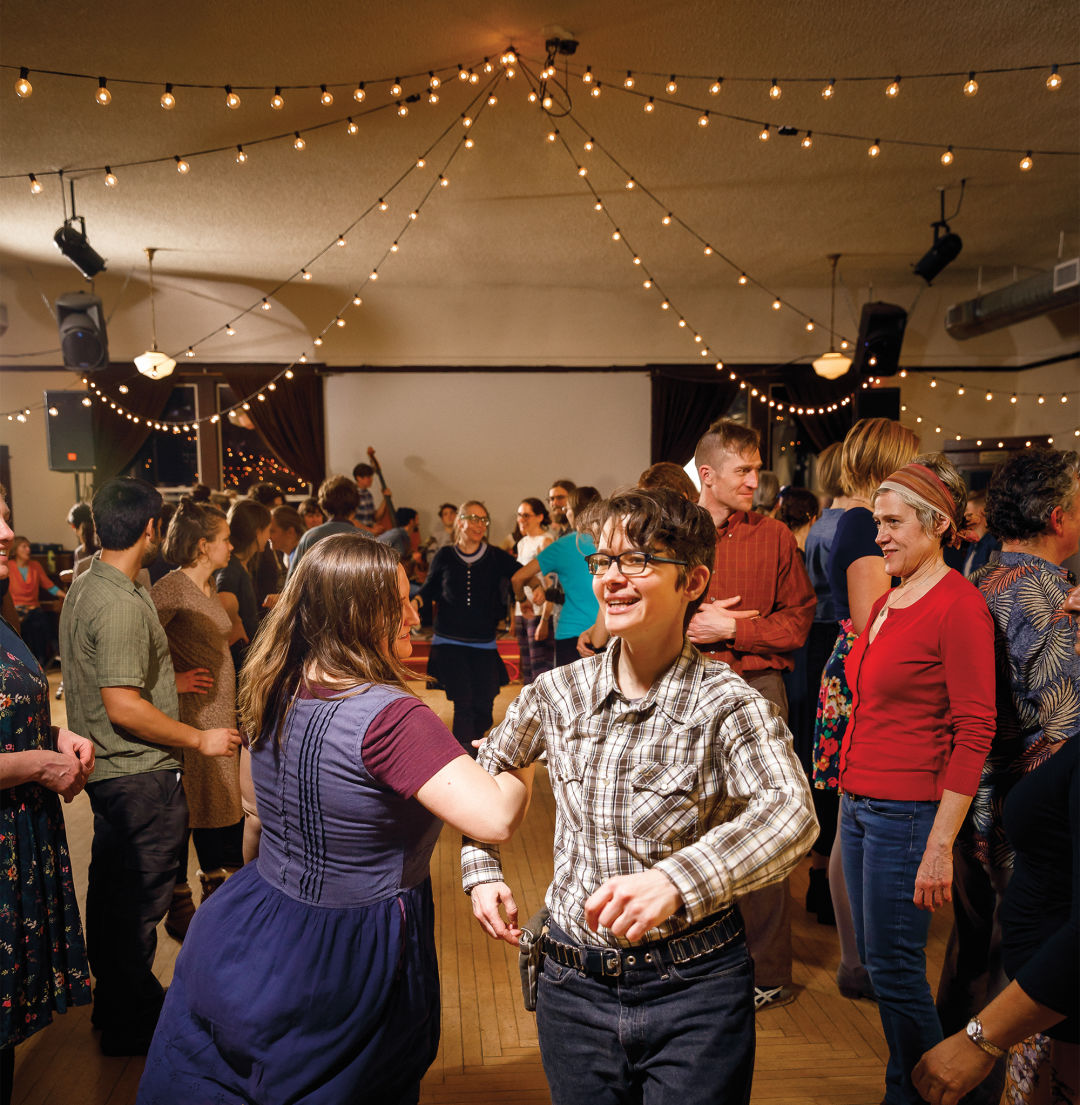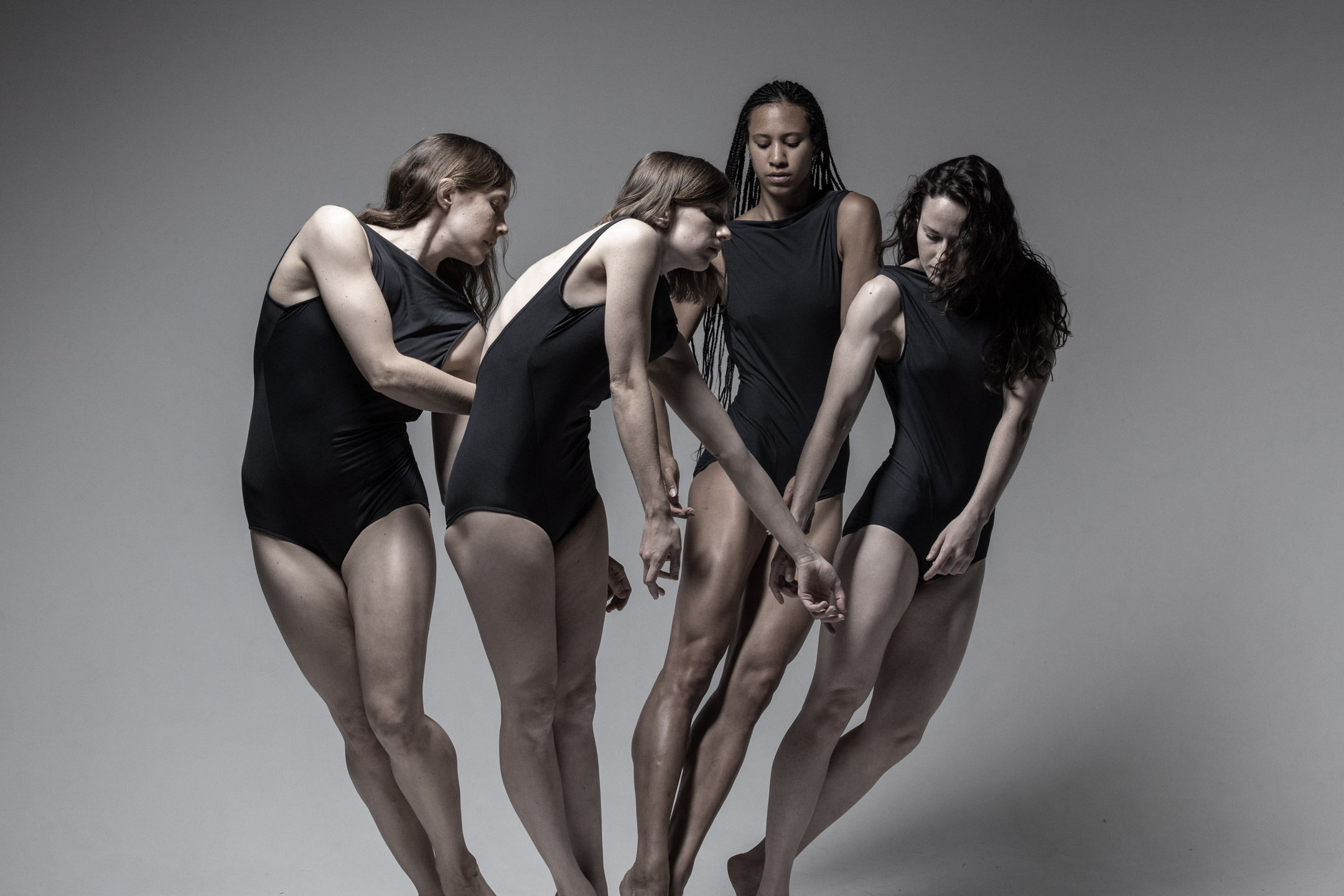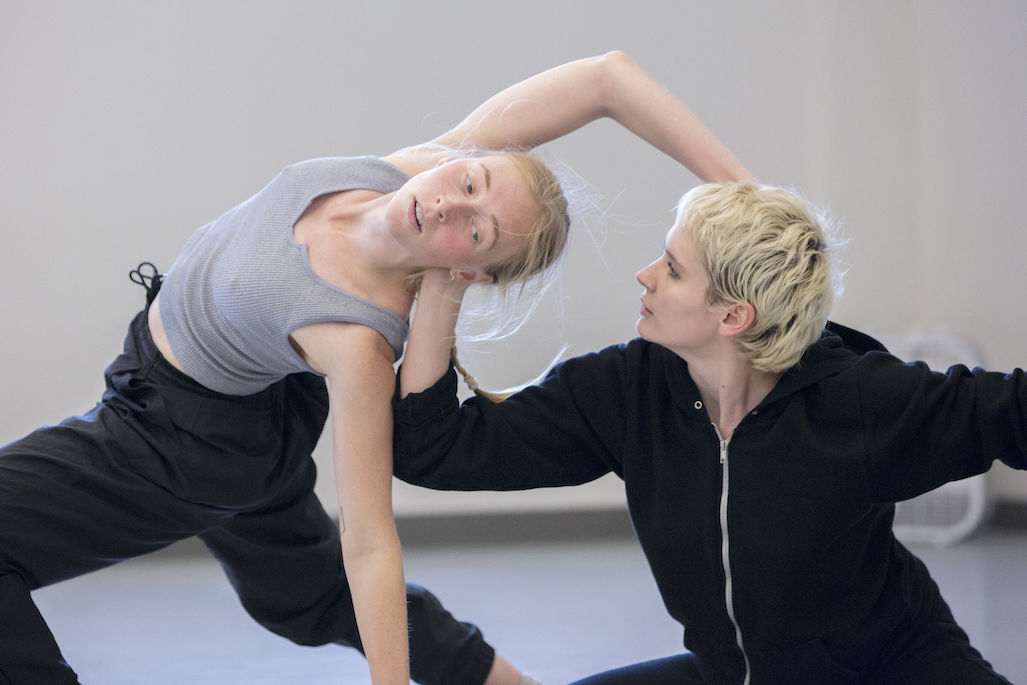At Portland’s Gender-Neutral Square Dance, You Won’t Hear “Ladies” and “Gents”

A Portland Square Dance at the Village Ballroom in February 2019
Image: NASHCO PHOTO
“Fire in THE HOLE!” shout some 80 Portlanders in unison, and the Old-Time Highway band kicks off a rollicking, fiddle-filled Virginia Reel.
On a Sunday night at the Village Ballroom on NE Dekum, a roomful of strangers reach for each other’s hands. Onstage, square dance caller Maggie Lind sing-shouts instructions over the music. “Swing your partner!” orders Lind, and the dance becomes jubilant, sweaty chaos.
Usually at square dances, partners are split up into “ladies” and “gents.” There’s no mention of those binary options tonight—this is a gender-neutral square dance. Outside the door, a bake sale raises money for nonprofit Trans Lifeline. Inside, everyone from tweens in star-spangled knee-socks to white-haired seniors in ballcaps do-si-do with whomever they please.
Square dancing has long been a symbol of corny, conservative traditionalism. But Portland’s gender-neutral square dances represent the forefront of a cultural shift. Since the 1970s, LGBT square dances have built welcoming, boisterous scenes that have upended gender-normative traditions. These days, says 39-year-old caller, banjo player, and queer Portlander Steph Noll, Old Time–style square dancing has a lot in common with the riot grrrl scene she grew up with.
“Old Time and punk are both about everyone, all together, full speed ahead. It’s music that makes people want to dance.”
Square dancing has its roots in European folk dances brought to the United States by immigrants. The style gained popularity in the 20th century, thanks in part to the insidious efforts of Henry Ford. The racist, anti-Semitic automaker hated jazz and devoted part of his fortune to promoting square dancing as America’s quintessential dance—publishing a square dancing handbook and getting schools to teach it. The image of square dancing as a wholesome, heteronormative American tradition stuck. In 1982, President Ronald Reagan even signed a bill celebrating the “etiquette among men and women which is a major element of square dancing.”
Unbeknownst to Reagan, gay square dancers were pioneering wholesome fun on their own terms. In December 1976, a Miami country western bar called the Double R began hosting gay square dances. At 1982’s Reno National Gay Rodeo, fans from across the nation learned the do-si-do. Portland’s own gay square dance club, the Rosetown Ramblers, formed in 1983 and has been swinging away ever since.
“We joke that it’s sort of like the church of square dancing,” says Rosetown Ramblers president Jeff Knapp, 56, who joined the group with his husband in 2013. (The Ramblers practice “Mainstream” square dancing, a more rigorous style than Old Time.) “There weren’t a lot of places where same-sex couples could go and dance and feel comfortable,” says Knapp. “We loved it immediately.”
Portland’s Old Time scene picked up steam in the mid-2000s; many give credit to legendary caller Bill “King Bubba” Martin, who organized “big, wild anarchist” dances where “old hippies danced with young train punks,” says Noll. “His advice was that your no. 1 job as a caller is to throw a good party—to make sure that whoever walks in has a good time.”
In 2009, Portlander Jane Palmieri, 39, started organizing queer Old Time square dances at now-defunct feminist community center In Other Words. The dance nights soon merged with the larger Old Time group.
“What I started thinking needed to be a separate event didn’t have to be,” says Palmieri. “Everyone who organizes dances was excited about making them more queer-friendly. It’s actually a very family-friendly event, because a lot of Portland families don’t want their kids thinking, ‘Boys have to be with girls on the dance floor.’”
Gender-neutral callers often swap in new words, like “larks” and “ravens” for “gents” and “ladies,” and rework other gender-specific language. For example, in a 2006 guide to gender-free square dancing, “You can feel her bustle bumping” is flipped to “You can feel their muscles pumping.”
Noll says square dancing is the rare event that literally brings together strangers of all ages and identities. “It’s powerful, this concept of strangers all joining hands,” she says. “When do we do that in our society today?”
Old Time square dances happen one Sunday a month at the Village Ballroom; the Rosetown Ramblers meet every week for dance lessons.




